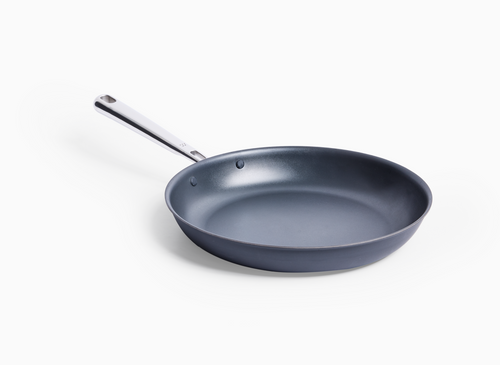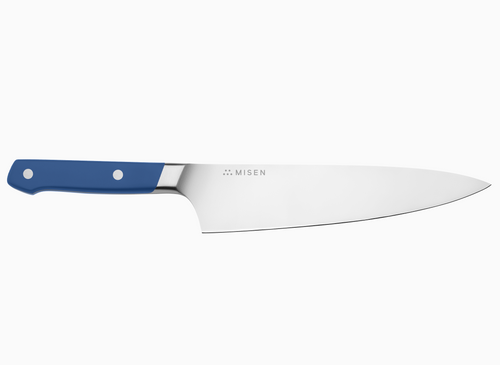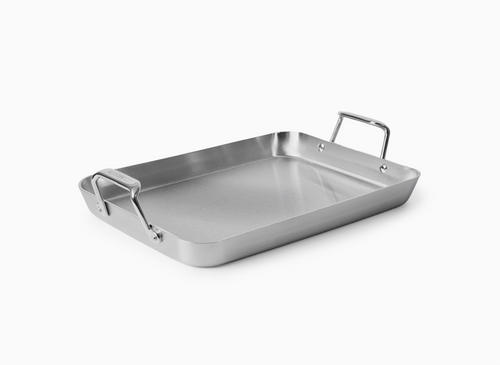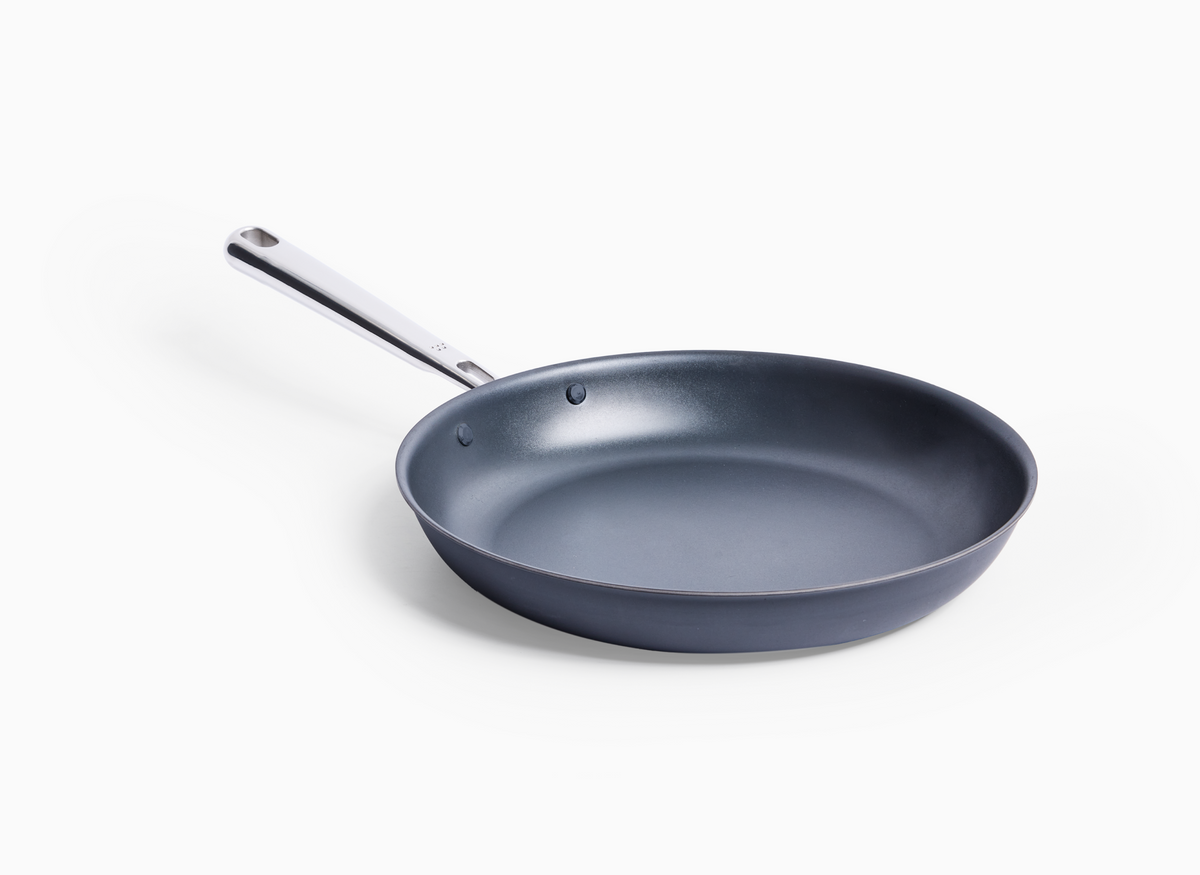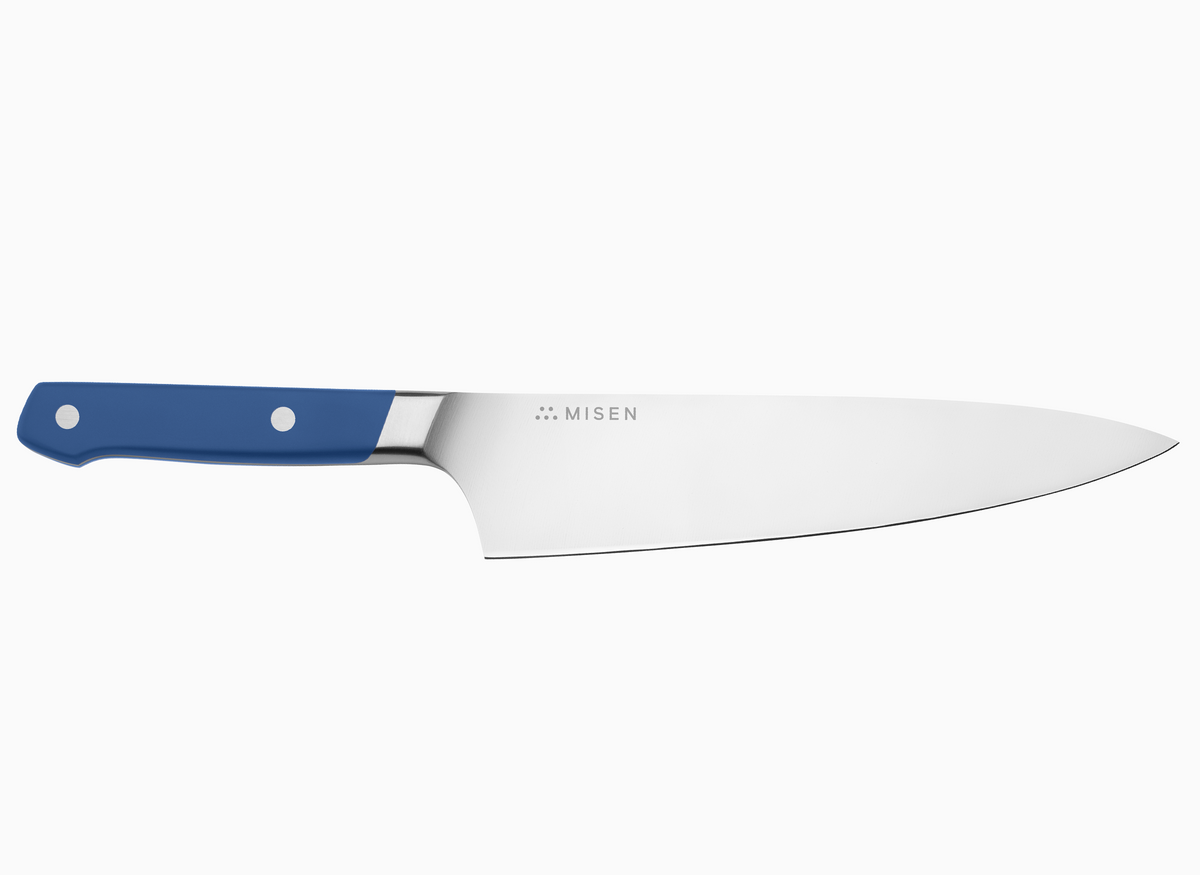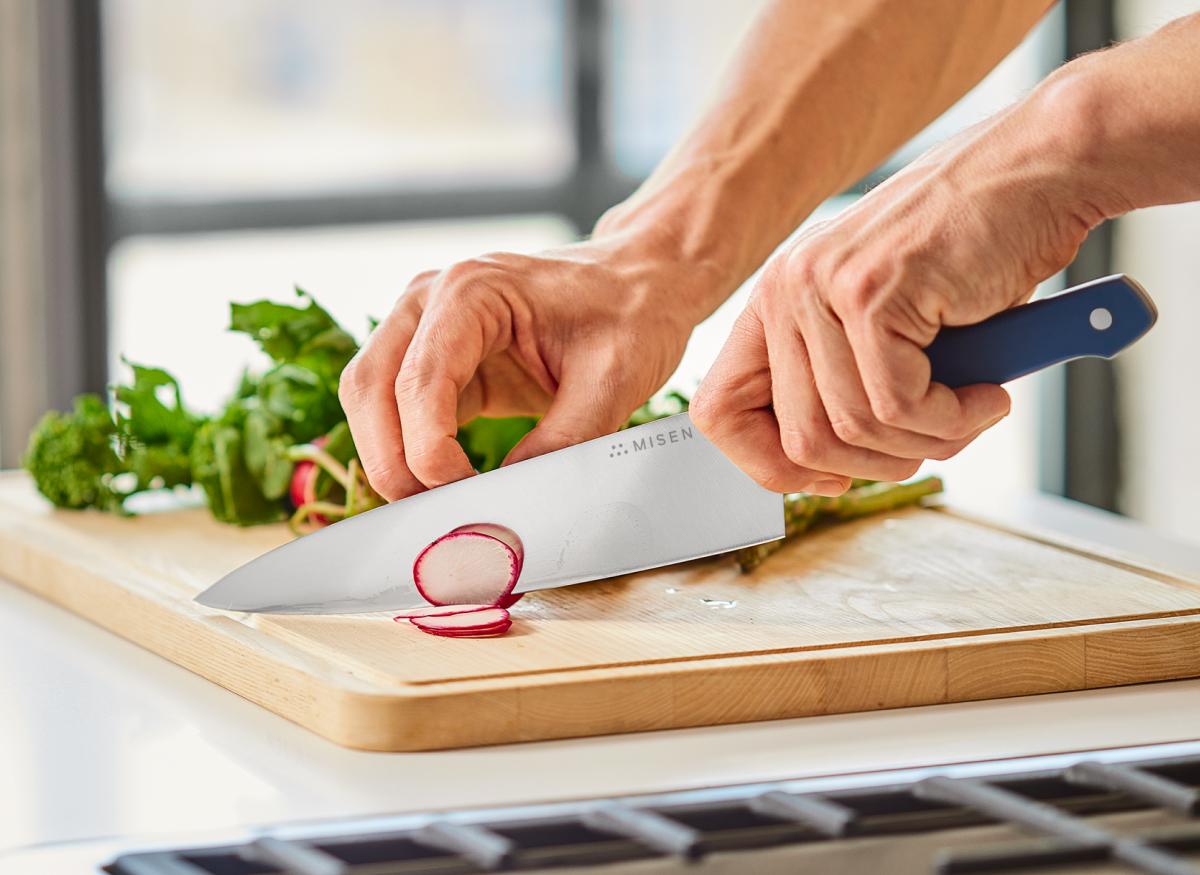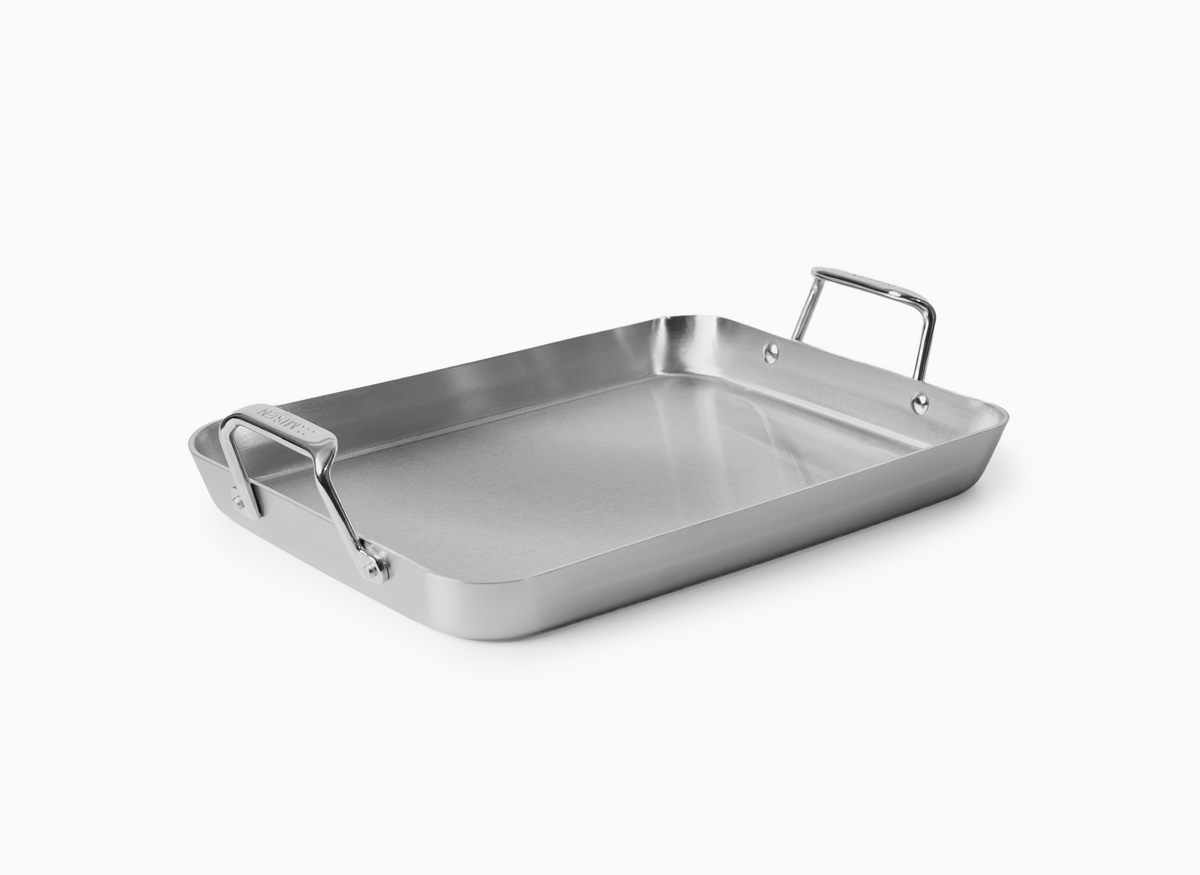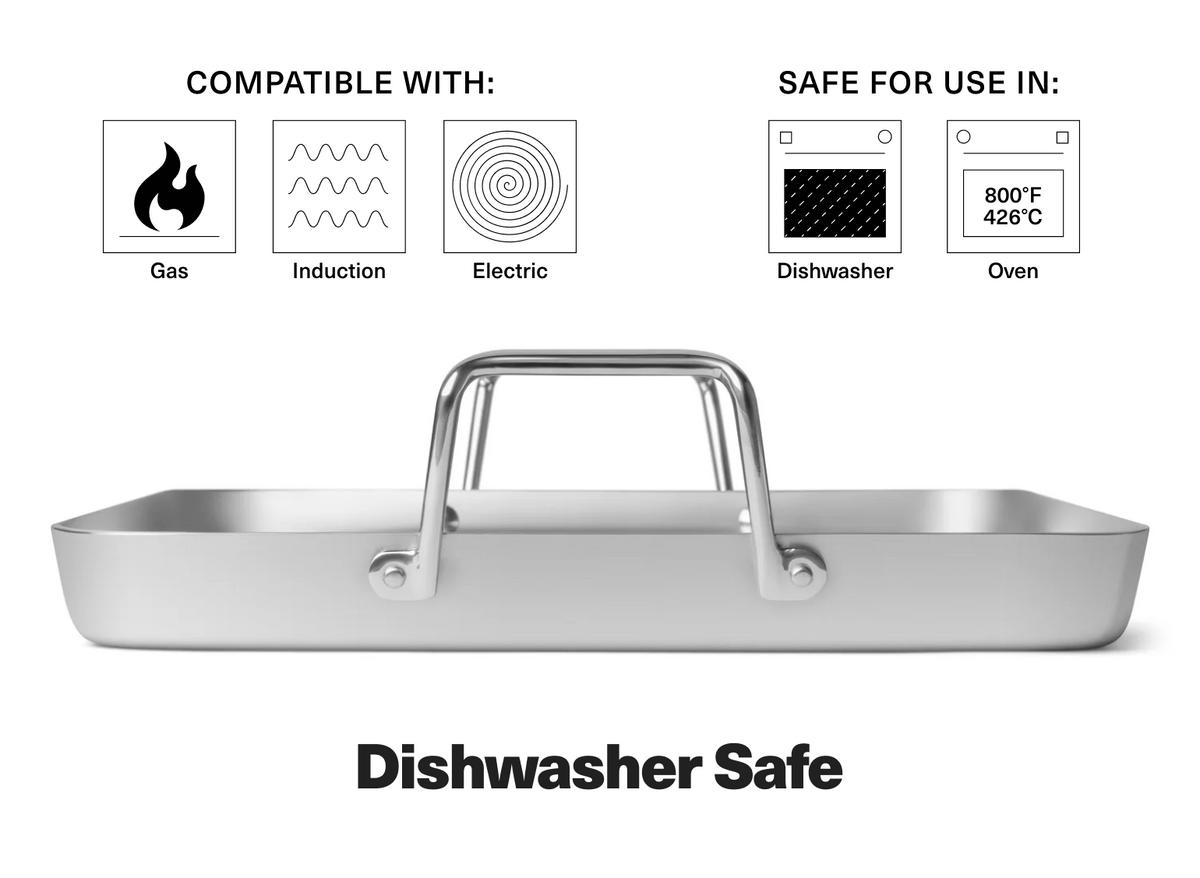Paring Knife 101: An In-Depth Guide to This Versatile Kitchen Essential

A paring knife is the indispensable precision tool that transforms tedious kitchen prep into effortless, waste-free artistry—peeling apples in one ribbon, coring tomatoes without crushing, deveining shrimp with surgical finesse, and turning citrus into cocktail-ready twists—thanks to its compact 2.5-4-inch blade, feather-light balance, and the unique ability to cut safely in your hand. This guide walks you from choosing the right style—straight-edge workhorse, curved bird’s-beak for garnishes, sheep’s-foot for safe slicing, or serrated for tough skins—through pro grips and techniques that maximize control while keeping fingertips safe, then demystifies blade steels, handle ergonomics, and price points from a $9 workhorse to $150 heirloom so you can confidently pick the knife that feels like an extension of your hand. You’ll learn why a sharp paring knife actually outperforms larger blades on detail jobs, how to maintain a razor edge with simple honing and occasional whetstone sessions, and the storage habits that turn a budget buy into a decades-long kitchen partner. Whether you’re a weekend cook who wants faster fruit salad or an aspiring garnisher plating restaurant-worthy twists, mastering this little blade means less food waste, safer cutting, and the satisfaction of turning the humblest prep tasks into creative, Instagram-ready moments—proving that in the kitchen, the smallest tool can make the biggest difference.
Introduction
Stop treating your chef's knife like a Swiss Army knife—grab a $10 paring blade and watch it peel apples, core tomatoes, and turn garnishes into Instagram gold while wasting zero fruit.
The Small Knife with Big Impact in Your Kitchen
Here's the truth about paring knives: size doesn't determine importance. This compact blade (typically under 3. 5 inches) handles the precision work your chef's knife simply can't manage. Need to peel an apple without wasting half the fruit?
Core a tomato cleanly? Create those Instagram-worthy garnishes? That's where your paring knife shines [1]. It's perfect for delicate ingredients like strawberries, shallots, and fresh herbs—basically anything that would get crushed under a larger blade.
Just remember the golden rule: if you're forcing it, you're using the wrong knife. Save the muscle work for your chef's knife and let your paring knife do what it does best—precision cuts on tender produce [1]. Trust us, once you start using one properly, you'll wonder how you ever managed without it.
Why Every Home Cook Needs a Paring Knife
Let's talk about why your kitchen isn't complete without a paring knife. Think of it as your detail specialist—the knife that saves the day when your chef's knife feels like using a sledgehammer to crack an egg. Its compact design and sharp tip give you the control needed for those finicky kitchen tasks that drive you crazy with larger knives [4].
You'll waste less food when removing potato eyes or trimming strawberries because you're cutting only what needs to go. Plus, tasks like deveining shrimp or creating citrus segments become actually enjoyable instead of frustrating [4]. The best part?
You don't need to spend a fortune to get a quality paring knife that'll transform your prep work. Whether you choose a classic straight edge, serrated for tomatoes, or a curved bird's beak for decorative cuts, you're investing in a tool that pays for itself in saved time and reduced food waste [4]. Quality kitchen tools should be accessible to everyone—and a good paring knife exemplifies this principle perfectly.
What You'll Discover in This Complete Guide
Ready to master the mighty paring knife? This guide has you covered from first cut to long-term care. We'll start with the basics—what makes a paring knife unique (hint: it's more than just the compact size) and why that matters for your cooking [5]. You'll discover the different styles available, from the versatile straight-edge to the specialized bird's beak, and learn which one suits your cooking style best.
We'll walk through game-changing techniques like in-hand cutting and show you the grips that give you maximum control without risking your fingertips [6]. Plus, we'll explore all the ways this little powerhouse can transform your kitchen prep—from perfect citrus segments to restaurant-quality garnishes [5]. Shopping for a paring knife? We'll break down what actually matters: blade materials, handle comfort, and how to get the best knife for your budget [6].
And because we want your knife to last, we'll share maintenance tips that keep it sharp and ready for action. By the end, you'll see your paring knife as the essential tool it truly is [5].
Understanding the Paring Knife
From ancient stone to modern stainless steel, the paring knife’s 2.5–4-inch, 1-ounce blade lets you peel apples in one ribbon, devein shrimp, and hull strawberries with fingertip control that your chef’s knife simply can’t match.
What Defines a Paring Knife: Size, Design, and Purpose
A paring knife stands apart through its compact build and precision-first design. You'll find the blade measures between 2. 5 and 4 inches—with 3 to 3. 5 inches hitting the sweet spot for most tasks.
The narrow blade width (typically 0. 5-0. 75 inches) and lightweight feel (just 1-3 ounces total) give you the control needed for intricate work your chef's knife can't handle. What really defines a paring knife is how it performs tasks that would frustrate you with larger knives.
Think peeling an apple in one continuous ribbon, removing strawberry tops without waste, or deveining shrimp with surgical precision. You can work directly in your hand—something you'd never attempt with a chef's knife—making tasks like coring and peeling faster and more intuitive. The blade profiles vary (we'll explore specific types in detail later), but each serves the core purpose of bringing precision to your prep work [7].
The Evolution and History of Paring Knives
The paring knife's story mirrors the evolution of cooking itself. Small precision tools have existed since ancient times, when cooks needed something nimble for detailed work [8].
The real game-changer came with better materials—each leap from stone to bronze to steel meant sharper, more durable blades [9]. Two innovations made today's paring knives possible: crucible steel in the 1740s created stronger blades, and stainless steel in 1913 brought us knives that resist rust and need less maintenance [10].
What started as a specialty tool for professional kitchens became the accessible, essential blade you reach for daily—proof that sometimes the smallest tools make the biggest difference in how we cook [10].
How Paring Knives Complement Your Kitchen Knife Collection
A paring knife fills the precision gap in your kitchen lineup. Your chef's knife tackles the heavy lifting—chopping, dicing, and most everyday cuts. But when you need to hull strawberries, peel ginger, or create delicate garnishes, that 8-inch blade becomes unwieldy [11].
Think of your knives as a team: the chef's knife handles 90% of general cutting, the bread knife saws through crusty loaves, and the paring knife manages all the detail work. No amount of skill with a chef's knife will make deveining shrimp or coring tomatoes as easy as it is with a proper paring knife. Each knife has its specialty, and trying to force one to do another's job leads to frustration and wasted food [11].
This is why even minimal knife collections need a paring knife alongside a chef's knife—together, they cover nearly every cutting task you'll face in the kitchen [11].
Anatomy of a Quality Paring Knife
Every element of a quality paring knife serves precision. The blade runs 2. 5-4 inches long—short enough for control, long enough for versatility. Look for a narrow profile that tapers to a fine point, giving you the accuracy needed for tasks like deveining shrimp or removing blemishes [12]. The spine (the unsharpened top edge) acts as your pressure point for controlled cuts, while the cutting edge should maintain consistent sharpness from heel to tip [13].
At the blade-handle junction, you'll find either a bolster or smooth transition. Skip full bolsters if you sharpen your own knives—they make accessing the heel difficult. Quality paring knives often feature a bolster-free design for easy maintenance [12]. The tang—how far the blade extends into the handle—affects both balance and longevity. Full tangs offer maximum durability, while partial tangs create a lighter knife that reduces hand fatigue during extended prep work [13].
For handles, prioritize comfort over aesthetics. Whether synthetic or wood, the grip should feel secure even with wet hands and sized appropriately (typically 3-4. 5 inches) for both board work and in-hand cutting techniques [12].
Types of Paring Knives
Start your knife collection with the straight-edge paring knife—the true multitasker that handles 90% of small cutting tasks with unmatched precision and control.
Classic Straight-Edge Paring Knives: The All-Purpose Option
The classic straight-edge paring knife is what you'll reach for most often in your kitchen. With its symmetrical spear-point design and straight cutting edge that tapers to a sharp tip, this style handles nearly any small cutting task with ease. The design gives you excellent control whether you're working in-hand or on a cutting board—that's why it's the go-to choice for both home cooks and professional chefs. What makes the straight-edge paring knife special? It's the true multitasker.
Unlike specialized variations, this blade excels at virtually every paring task you'll encounter [16]. The pointed tip handles detail work beautifully, while the straight edge gives you clean, precise cuts [15]. You'll develop your own technique for peeling—many cooks hold the produce in one hand and peel toward themselves for maximum control [15]. You'll find this design shines brightest when you need both precision and practicality. Whether you're tackling delicate work or everyday prep, the balanced blade delivers consistent results [14].
When mincing garlic or dicing shallots, you get better control than with larger knives [16]. Quality models from reputable manufacturers offer excellent performance while remaining affordable [14]. If you're building your knife collection, start here. The straight-edge paring knife handles about 90% of small cutting tasks, making it your essential foundation before exploring specialized options [16]. It's the style professional chefs trust for everything from basic prep to intricate detail work—a true kitchen workhorse that earns its place next to your chef's knife [14].
Bird's Beak (tourne) Paring Knives: For Curved and Intricate Cuts
The bird's beak knife (also called a tourné knife) gets its name from that distinctive curved blade. This specialized shape isn't just for show—it's designed for precise work on curved surfaces where straight blades struggle [17]. Watch how easily the curved edge follows the contours of round produce. The sharp tip scores through papery onion skins, then the slim blade slips right underneath for clean removal [17].
This curved design opens up possibilities beyond basic peeling. You'll love it for creating thick citrus twists, tackling knobby ginger, and working around oddly-shaped squash [17]. The precision lets you handle delicate tasks like peeling grapes or crafting decorative garnishes [17][18]. That pointed tip?
Perfect for hulling strawberries, removing Brussels sprout cores, and digging out potato eyes [17][19]. The bird's beak knife earned its place in professional kitchens creating tournée cuts—those classic seven-sided vegetables that cook evenly and look beautiful on the plate [19]. When you use one, draw the knife toward yourself in controlled motions, letting the curve guide your cuts [18]. Look for models with comfortable, ergonomic handles that support the precise grip you need for detailed work [17][18].
Sheep's Foot Paring Knives: Stability and Precision Work
The sheep's foot paring knife takes a different approach with its straight edge and rounded, blunt tip. This design prioritizes stability and safety over piercing ability [20]. The flat edge runs nearly parallel to the spine, giving you rock-steady control when slicing. No more worrying about the blade slipping on small ingredients [20].
That rounded tip makes this style exceptionally safe for close-hand work. When you're peeling round fruits or working in tight spaces, you'll appreciate the reduced puncture risk [20]. The design has practical roots—sailors and farmers originally valued these knives for their safety in confined spaces and precision work [20]. In your kitchen, reach for a sheep's foot knife when you need perfect straight cuts.
It excels at precision trimming, creating uniform vegetable batons, and detailed garnish work [20]. The flat profile distributes pressure evenly along the blade's length, giving you consistent control through delicate cuts [20]. This design especially benefits anyone teaching kids to cook or handling repetitive cutting tasks where safety matters most [20]. While you won't use it for coring or piercing tasks, the trade-off is worth it for the superior slicing precision and peace of mind [20].
Serrated Paring Knives: When Texture Matters
Think of serrated paring knives as your texture specialists. Those small saw-teeth excel at one crucial job: slicing through tough skins without crushing delicate interiors [21]. When you use a gentle sawing motion instead of pressing down, you get clean cuts through tomatoes and citrus without the squishing and sliding you'd get with a straight edge [21].
The serrated edge grips slippery surfaces, giving you control with minimal pressure—a real advantage when safety matters [22]. You'll reach for this knife when making citrus garnishes, halving cherry tomatoes, or creating those paper-thin orange slices that make desserts special [21]. But don't limit yourself to produce.
Serrated paring knives handle delicate baking tasks beautifully—trimming cake edges, cutting pastries, even slicing through chilled cookie dough without squashing it flat [21]. As a bonus, that serrated edge stays sharp longer than straight blades, meaning less maintenance for you [22]. Quality doesn't have to break the bank either—you can find excellent serrated paring knives starting around $9 [21].
Essential Paring Knife Techniques
Master the handle grip for power, the blade grip for precision, and the in-air cutting technique for ultimate control—then switch between them like a pro to hull strawberries, devein shrimp, and peel fruit faster and safer than you ever thought possible.
Mastering Paring Knife Grips: Handle vs. Blade Control
Getting comfortable with your paring knife starts with mastering two essential grips. The handle grip keeps your entire hand behind the bolster on the handle—perfect if you're just starting out, have smaller hands, or need more cutting force [23]. You'll get good stability with this grip, though you'll trade off some precision.
The blade grip takes things up a notch: place your thumb and forefinger directly on the blade in front of the bolster [23]. This grip gives you a direct connection with the cutting edge, delivering the balance and control you need for detailed work like hulling strawberries or deveining shrimp. Here's the practical approach: use the handle grip when cutting firmer foods on a board, then switch to the blade grip for those delicate, in-air tasks that need fine control.
Don't worry if the blade grip feels awkward at first—with practice, it becomes second nature and lets you work longer without tiring your hand. Whatever grip you choose, make sure the knife feels balanced and comfortable in your hand [5]. Most cooks start with the handle grip and naturally progress to the blade grip as they tackle more precise tasks.
In-Hand Cutting Techniques for Maximum Precision
In-hand cutting sets paring knives apart from every other knife in your kitchen—it's the one time you'll actually cut toward yourself safely. This technique, where you hold both the knife and food in the air, opens up a world of precise control. Here's how to do it right: hold the fruit or vegetable in your non-dominant hand and your paring knife in your dominant hand, fingers wrapped securely around the handle [5]. For the best control, rest the handle in your palm, place your three lower fingers along the bottom to distribute weight evenly, and position your thumb and index finger on opposite sides of the blade [24].
This grip gives you rock-solid stability for delicate work. When peeling, rotate the food as you go, using your thumb as a guide while keeping it safely away from the blade [5]. Coring becomes simple—just use the sharp tip to cut a cone shape at the top of strawberries or apples [5]. For deseeding work, slip the knife tip under seeds and flick them out with controlled motions [5].
Segmenting citrus? Hold the fruit firmly and let the tip do the precision work of separating segments and trimming pith [5]. You can even devein shrimp with confidence—make a shallow cut along the back to expose the vein without cutting through [5]. Practice with smooth, wave-like motions to develop the control that makes these techniques feel natural [24].
On-Board Cutting Methods for Different Tasks
Your paring knife isn't just for in-hand work—it's equally impressive on the cutting board for tasks that need precision over power. When you're mincing garlic or shallots, that small blade gives you control that larger knives simply can't match [5]. It's perfect for detail work: trim strawberry tops in quick succession, slice herbs without bruising them, or create clean citrus segments effortlessly. For citrus segmenting, place the fruit on your board, slice lengthwise, then divide into wedges before using the tip to separate segments from the pith—no torn membranes, just clean cuts [5]. Deseeding peppers?
Slice them open on the board first, then use your paring knife to cut away ribs and scrape out seeds with minimal waste [5]. Where paring knives really shine is decorative scoring—make controlled cuts on bread dough for beautiful expansion patterns, score pie crusts for steam vents, or create intricate pastry designs [5]. You can even tackle small julienne or brunoise cuts when precision beats speed. A quality paring knife like this [3. 25-inch model](https://misen.
com/products/paring-knife) makes this detailed board work feel effortless. Keep your grip close to the bolster and maintain that protective claw position with your guide hand, even with tiny ingredients [5]. The compact blade creates an intimate connection with your cutting surface that larger knives can't achieve, giving you the control for truly precise work.
Safety Fundamentals When Working with Paring Knives
Small doesn't mean harmless—paring knives need the same respect as any sharp kitchen tool. Here's how to stay safe while mastering these precision instruments. First, get your grip right: wrap your fingers securely around the handle, or use the blade grip with your thumb and index finger on opposite sides of the blade for maximum control [5]. The golden rule? Always cut away from your body—except when peeling, which is the one time cutting toward yourself is actually correct technique with paring knives [5].
If you find yourself forcing the blade, stop immediately and grab a heavier knife—forcing a paring knife is asking for trouble [5]. Keep those guide fingers curled under in a protective claw, even with tiny ingredients [25]. Stay aware of where that sharp tip is pointing, especially during in-hand cutting when everything's in the air. When peeling in-hand, your thumb guides the blade but stays well clear of the edge [5]. Teaching kids or beginners?
Start with straight-edge or sheep's foot styles—their predictable cutting paths are more forgiving than curved bird's beak knives. Storage matters too: loose knives in drawers are accidents waiting to happen. Use knife blocks, magnetic strips, or blade guards instead [25]. Always hand wash and dry your knife right after use—never leave it lurking in sudsy sink water where someone might reach in [25]. Remember this counterintuitive truth: a sharp knife is actually safer than a dull one because it cuts cleanly without the dangerous force that causes slips [25].
What Is a Paring Knife Used For: Versatile Applications
Master the paring knife’s four fruit techniques—peel toward yourself, core with cone cuts, flick out seeds, and segment citrus free of pith—to turn even knobby apples and delicate kiwis into zero-waste, restaurant-perfect prep.
Fruit Preparation: Peeling, Coring, Segmenting, and Hulling
A paring knife transforms fruit preparation from tedious to precise with four essential techniques. When peeling, this knife offers unmatched control for fruits like apples, kiwis, and mangoes using a distinct approach—cutting toward yourself rather than away [5]. Hold the fruit in your non-dominant hand and the knife in your dominant hand with fingers wrapped firmly around the handle. Use your thumb as a guide while maintaining safe distance, rotating the fruit as you work to create continuous, efficient strokes [5].
For coring, the knife's sharp tip creates precise cone-shaped cuts perfect for strawberry tops and apple cores [5]. The pointed tip excels at deseeding, allowing you to insert it cleanly under seeds in lemons or peppers before using controlled flicking motions to remove them without damaging surrounding flesh [5]. When segmenting citrus, first slice the fruit lengthwise on a cutting board, then further divide into wedges before using the tip to separate segments from bitter pith with surgical precision [5]. This technique preserves maximum fruit while eliminating unwanted membrane.
The knife's accuracy proves superior to vegetable peelers, particularly with irregularly shaped produce where its blade can navigate curves and contours that rigid peelers cannot [26]. These techniques minimize waste and maximize the usable portions of expensive or seasonal fruits.
Vegetable Work: Trimming, Seeding, Julienning, and Fine Dicing
A paring knife brings precision to vegetable preparation through several specialized techniques. For trimming, the knife's sharp tip and small blade excel at removing blemishes, stems, and eyes from vegetables with minimal waste. When working with peppers, a paring knife offers superior control for precise seeding—use the pointed tip to cut a circle around the stem, then extract the core and seeds with a quick twist [27].
The knife's size makes it ideal for working with small vegetables that would be unwieldy with larger blades. For julienning peppers, first slice them into flat panels, then use your paring knife to create thin, uniform strips by making consistent parallel cuts with the blade [27]. This technique works particularly well for garnishes and stir-fries where consistency matters.
When fine dicing is required, the paring knife's maneuverability allows for precise, tiny cuts on small items like garlic and shallots where a chef's knife would be excessive [28]. For all vegetable work, maintain proper technique—hold vegetables firmly on the cutting board while keeping your guiding hand's fingers curled under in a protective claw position [28]. This combination of knife control and proper technique makes the paring knife indispensable for detailed vegetable preparation.
Protein Tasks: Deveining Shrimp, Trimming Fat, and Detail Work
A paring knife's precision makes it ideal for detailed protein tasks that require surgical accuracy. When deveining shrimp, the knife's sharp tip creates a shallow incision along the back without damaging the delicate flesh, exposing the dark vein for easy removal [29][30]. Hold the shrimp in your non-dominant hand while using the paring knife in your dominant hand to make a deliberate cut approximately 1/8-inch deep along the curved back [30].
Once exposed, use the knife tip to lift and pull out the vein in one clean motion [30]. For trimming fat from cuts of meat, the paring knife's maneuverability allows precise control when removing excess fat or silverskin without sacrificing valuable protein [29]. Unlike larger knives that might remove too much meat along with fat, a paring knife lets you work along natural seams and contours with minimal waste [31].
The knife also excels at butterflying chicken breasts, scoring duck skin to render fat, and portioning delicate proteins like fish fillets where clean cuts prevent cellular damage that could cause moisture loss [31]. For smaller tasks like removing pinbones from fish, the paring knife's pointed tip provides the control needed to extract these tiny bones without destroying surrounding flesh [31]. These precision protein tasks demonstrate why professional chefs consider paring knives essential for detailed work that larger knives simply cannot accomplish with the same finesse.
Garnishing and Decorative Cutting Techniques
A paring knife transforms from utility tool to artist's instrument when creating decorative garnishes that elevate dish presentation. The knife's small blade and precise tip allow for intricate cuts impossible with larger knives, enabling the creation of delicate garnishes like lemon twists, tomato roses, and elaborate fruit segments [32]. When creating tomato roses, make continuous thin spiral cuts around the fruit while gradually rotating it, using the sharp tip to maintain precision throughout the peel [5].
For citrus work, the knife excels at creating thick decorative twists for cocktails and perfect segmentation free from bitter pith [5]. The paring knife's maneuverability makes it ideal for intricate vegetable carving—create radish flowers by making shallow angled cuts around the circumference, then soaking in ice water to open the "petals" [32]. Its precision particularly shines when scoring decorative patterns on bread dough, controlling expansion during baking while creating visual appeal [5].
Unlike specialty garnishing tools, the paring knife's versatility handles diverse decorative tasks from hulling strawberries into rosebud shapes to creating cucumber ribbons for sophisticated plate presentation [5]. For best results, use a freshly sharpened knife and practice consistent cutting pressure, as garnishing work reveals any flaws in technique [33]. The bird's beak variation proves especially valuable for curved garnishes, its distinct curved blade following natural contours while maintaining uniform thickness [32].
Choosing the Perfect Paring Knife
Choose carbon steel for surgical paring precision if you’ll lovingly wipe it dry after every cut, or grab stainless for carefree corrosion resistance that forgives a forgotten rinse.
Blade Materials: High-Carbon Steel vs. Stainless Steel Options
When choosing blade material for your paring knife, you're balancing performance against maintenance needs. High-carbon steel delivers exceptional sharpness and precision thanks to its fine grain structure—perfect for those intricate paring tasks that demand surgical accuracy [36]. These blades take a thinner, sharper edge than stainless steel and respond beautifully to sharpening [34]. You'll love carbon steel for delicate work like creating paper-thin citrus peels or precise garnishes. Just remember that this performance requires commitment—you'll need to clean and dry your knife promptly after each use to prevent rust, and it will develop a unique patina over time [36]. Stainless steel blades offer a different set of advantages.
With at least 10. 5% chromium content, they resist corrosion and handle the realities of busy kitchens where knives might sit wet between tasks [35]. While stainless steel traditionally doesn't achieve quite the same razor sharpness as carbon steel, it's more forgiving in daily use [36]. When the edge does need attention, stainless steel typically folds rather than chips, making it easier to restore with regular honing [34]. This durability proves especially valuable when working with acidic ingredients like tomatoes and citrus that can damage reactive metals. Looking for the best of both worlds?
Semi-stainless or high-carbon stainless steel options balance superior sharpness with easier maintenance [35]. Consider your cooking style: if you prioritize absolute precision and enjoy the ritual of knife care, carbon steel rewards your attention. If you want reliable performance with minimal fuss, stainless steel keeps you cutting without constant maintenance [36]. Either way, keeping your blade sharp is essential—and when it's time for professional sharpening, consider specialty knife services or reputable kitchen stores that offer this expertise [36].
Handle Design and Ergonomics for Comfort and Control
Your paring knife handle makes the difference between effortless precision and hand fatigue during detailed work. Since paring knives require both traditional board grips and in-hand techniques, the handle must feel secure and comfortable in multiple positions [6]. A properly designed handle distributes pressure evenly across your palm, letting you work longer without cramping while maintaining the control needed for delicate cuts [37]. Handle materials each bring distinct advantages to your kitchen work. Wood handles feel warm and traditional in your hand but need occasional oiling to prevent cracking. Plastic handles offer easy cleaning and durability—perfect for busy kitchens where sanitization matters.
Rubber or textured synthetic materials provide the best grip security, especially important when peeling juicy fruits or working with wet vegetables [38]. The texture becomes critical during delicate tasks—look for handles with subtle knurling or grip patterns that prevent slipping without causing discomfort [37]. Unlike hefty chef's knives, paring knives need different weight distribution. The balance point should sit closer to the blade, giving you enhanced tip control for precision work. Overall weight stays lighter to prevent fatigue during extended prep sessions [37]. Safety features matter too—many well-designed paring knives include finger guards or bolsters that create a natural barrier between your grip and the blade, crucial protection when your fingers work so close to the cutting edge [37].
Test any paring knife before committing. Hold it as you would for both board work and in-hand peeling. Your fingers should wrap comfortably around the handle without stretching or cramping. The knife should feel like a natural extension of your hand—because when you're hulling two pounds of strawberries or segmenting a case of citrus, that comfort translates directly into control and efficiency [38].
Finding the Right Size and Balance for Your Hand
Getting the right size and balance transforms your paring knife from a tool into a precision instrument. Start with blade length based on your most common tasks. Shorter blades (2. 5-3 inches) give you maximum control for detailed work like creating garnishes or peeling small fruits. The versatile 3. 5-inch length handles most kitchen duties beautifully, while longer blades (3. 75-4 inches) bridge the gap toward utility knife territory but trade away some nimbleness [39].
Handle fit determines your long-term comfort. Here's a simple test: measure your hand width and look for handles slightly longer than this measurement [40]. More important than length is circumference—the handle should fill your hand comfortably without requiring a death grip or leaving gaps. When testing knives, practice both your board grip and in-hand positions. Your fingers should wrap naturally around the handle without cramping or overextending [40]. Balance makes all the difference during extended prep work. A well-balanced paring knife prevents wrist fatigue when you're working through a mountain of vegetables [39].
Some cooks love ultralight knives that disappear in the hand, while others prefer a bit more weight for steady, controlled cuts. Find your preference by testing where the balance point falls—ideally right where your thumb and index finger naturally grip the knife [39]. Don't overlook handle texture, especially if you work with juicy fruits or wet vegetables. Materials like G-10 or textured Micarta maintain grip even when slick, while smooth handles can become slippery hazards [40]. Remember, the perfect paring knife should feel like it was made for your hand—because when you find that match, every cut becomes more precise and enjoyable [40].
Price Considerations: Budget-Friendly vs. Premium Options
Paring knife prices range dramatically from under $10 to over $200, but higher cost doesn't always guarantee better performance. Budget-friendly options like the Victorinox 3. 25-inch paring knife ($14) prove this point, earning devoted followings among professional chefs despite modest pricing [41]. These affordable workhorses feature functional plastic handles and stamped blades that handle core tasks effectively, though they lack the refinements of premium models [42]. As culinary instructor Brendan McDermott explains, "When it comes to a paring knife, I'm a little less selective compared to my chef's knife... I own a little Victorinox, plastic handle, stamped blade, which I really, truly love" [42].
Mid-range options ($35-70) step up the game with improved materials, better edge retention, and enhanced comfort without breaking your budget [43]. These knives typically offer superior balance, more durable construction, and thoughtful features like textured handles that maintain grip security when wet [43]. Premium paring knives ($80-100) deliver professional-grade performance through features like full-tang construction, exceptional edge retention, and premium handle materials [41][43]. At the highest tier ($150+), you'll find artisanal pieces that blur the line between tool and art, featuring Damascus steel patterns and exotic handle materials [43]. Your usage patterns should guide your investment. Daily prep work might justify a higher-end knife that maintains its edge through heavy use.
Weekend cooking? A quality budget option handles occasional tasks beautifully [42]. Many home cooks find their sweet spot in the mid-range, balancing performance with value. Interestingly, that budget Victorinox often outperforms knives costing five times more—proof that smart engineering beats fancy marketing [42]. Focus on finding a knife that fits your hand, holds an edge, and inspires you to tackle those detailed cutting tasks with confidence.
Care and Maintenance
Treat your paring knife to a quick hand-wash and dry, store it safely away from drawer chaos, and give it weekly honing plus a 3-6 month sharpening so its edge stays razor-ready on wood or plastic boards.
Proper Cleaning and Storage Methods
Your paring knife deserves immediate attention after each use. Simply rinse it under cold water while gently rubbing the blade with your fingers—just avoid the sharp edge [44]. Got greasy residue? A touch of dish soap on a clean sponge does the trick [45]. While some synthetic-handled knives claim to be dishwasher-safe, hand washing keeps your blade sharper longer and prevents it from banging against other utensils [45]. Wooden handles need extra love—wipe them with a damp cloth instead of soaking, and treat them occasionally with cooking oil or protective wax to prevent cracking [45].
Always dry your knife right away with a clean towel to avoid water spots and rust [45]. Storage matters just as much as cleaning. Tossing knives loose in a drawer is a recipe for dull blades and accidental cuts [45]. Instead, protect your investment with proper storage: knife blocks, magnetic strips, or drawer organizers with individual slots work perfectly [44]. Blade guards add extra protection when you're transporting knives or working with limited space [44]. Your cutting surface plays a surprising role in blade life.
Skip the glass and stone boards—they're blade killers. Stick with wood or plastic boards that have enough give to preserve your edge [45]. Pro tip: when moving ingredients from board to pot, flip your knife and use the spine to scrape. Your cutting edge will thank you [45].
Sharpening Your Paring Knife: Techniques and Frequency
Keeping your paring knife sharp is all about understanding the difference between honing and sharpening. Honing realigns your existing edge—do this weekly with a steel or ceramic rod. Sharpening actually removes metal to create a new edge—save this for every 3-6 months [46]. The compact size of a paring knife demands careful angle control: stick to 15° for Japanese blades and 20° for Western styles [46].
New to sharpening? Start with a manual pull-through sharpener with preset angles. Ready for more control? A whetstone (1000-3000 grit) gives you the best results [46].
Using a whetstone on a small paring knife takes patience. Soak the stone for 10-15 minutes, then use gentle pressure (think the weight of a small orange) while drawing the blade from heel to tip [46].
Signs It's Time for Maintenance or Replacement
Your paring knife tells you when it needs attention—you just need to know what to look for. The tomato test never lies: if your knife slides across the skin or crushes instead of slicing cleanly, it's time to sharpen [47]. Pay attention during everyday tasks too. Does your knife slip off onion skins? Struggle with simple peeling?
These are clear dulling signals [48]. For a quick check, try the paper test—hold paper upright and slice down. A sharp knife glides through smoothly, while a dull one tears or stalls [48]. You can also feel the difference. Carefully run your fingertips along the blade (avoiding the edge)—a sharp knife has a distinct, defined feel that a dull blade lacks [48].
Most home cooks should sharpen every six to twelve months, but if you're prepping daily, monthly maintenance might be necessary [47]. Sometimes sharpening isn't enough. Look for these replacement indicators: - Visible chips or nicks that won't sharpen out - A bent blade that won't straighten - Deep pitting or corrosion damage - Consistent dragging even after fresh sharpening [49] Don't forget the handle—cracks, looseness, or severe wear compromise your safety during precise work. When these signs appear, it's time for a new knife rather than risking injury with a compromised tool.
Professional Tips for Extending Your Knife's Lifespan
Want your paring knife to last decades? It's all about building smart habits. First rule: skip the dishwasher entirely. The harsh environment damages both blade and handle, no matter what material [50]. Instead, hand wash immediately after use with warm water and soap—especially important after cutting acidic foods like citrus or tomatoes that can eat away at your blade [50].
Dry thoroughly every time, and occasionally treat your blade to a light coat of food-safe mineral oil for extra protection [50]. Your cutting surface matters more than you might think. Wood and plastic boards have enough give to protect your edge, but glass boards? They're knife killers—avoid them completely [50]. Smart storage prevents both accidents and edge damage.
Consider these options: - Wall-mounted magnetic strips (perfect for small kitchens) - Slotted drawer inserts - Protective edge guards for drawer storage [50] Keep your edge keen with daily honing using a ceramic or steel rod—this realigns the microscopic teeth without removing metal [50]. Schedule professional sharpening every 6-12 months, as honing eventually stops being effective [50][51]. These habits take seconds but pay dividends. With proper care, your paring knife transforms from a kitchen tool that lasts years into one that serves you for decades [50].
Conclusion
The Indispensable Role of a Paring Knife in Your Kitchen
The paring knife is more than just another kitchen tool—it's your precision partner for all those detailed tasks where control matters most. As we've explored throughout this guide, from basic techniques to advanced garnishing, this small knife handles the intricate work that larger knives can't manage [6].
Whether you're peeling fruits, deveining shrimp, or creating beautiful garnishes, the paring knife's compact design and sharp precision make these tasks feel effortless [6]. Its ability to work both on the cutting board and in your hand gives you flexibility that no other knife can match—making it second only to the chef's knife in kitchen importance.
When you need accuracy over power, reach for your paring knife and watch how it transforms tedious prep work into precise, efficient cuts.
Selecting the Right Paring Knife for Your Cooking Style
Finding your perfect paring knife comes down to how you cook and what feels right in your hand. As covered in our selection guide, blade shape matters—straight edges excel at precision tasks while curved designs help with rocking cuts [41]. Your hand size determines the ideal handle, and there's a style for everyone, from slim grips for smaller hands to substantial handles for larger palms [41].
Don't let budget concerns hold you back—quality paring knives are available at every price point, and even modest investments deliver excellent performance [41]. If you work frequently with round produce or love creating garnishes, consider adding a bird's beak style to complement your straight-edge knife [52][53]. The key is finding a knife that feels natural in your grip and matches your cooking style—when you have the right fit, prep work becomes both easier and more enjoyable [53].
Once you've found your ideal paring knife, proper maintenance through regular sharpening will keep it performing like new for years to come.
Elevating Your Culinary Skills with This Versatile Tool
Your journey with the paring knife doesn't end with basic skills—it's just the beginning. As we've shown in the techniques sections, mastering grip transitions and in-hand cutting opens up a world of culinary possibilities [5].
Start with simple tasks and gradually work up to decorative cuts and garnishes. Each practice session builds muscle memory and confidence that carries over to all your kitchen work [5].
Soon you'll find yourself reaching for your paring knife not just for peeling apples, but for creating beautiful presentations that impress family and friends [54]. This small tool has the power to transform how you approach cooking—from viewing prep work as a chore to embracing it as an opportunity for precision and creativity [54].
- Paring knives excel at precision tasks like peeling, coring, and deveining that larger knives can't handle.
- The 3-3.5 inch straight-edge paring knife handles 90% of small cutting tasks most effectively.
- Master the blade grip by placing thumb and forefinger on opposite sides of the blade for maximum control.
- Hand-wash and dry immediately after use to prevent rust and maintain the knife's sharp edge.
- A sharp paring knife is safer than a dull one because it cuts cleanly without requiring dangerous force.
- Test sharpness by slicing a tomato - if it crushes instead of cutting cleanly, it's time to sharpen.
- Quality paring knives are available at every price point, with budget options often outperforming expensive models.
- https://www.escoffier.edu/blog/culinary-arts/different-knives-and-the-best-uses-for-each/
- https://misen.com/blogs/news/the-essential-guide-to-paring-knives-precision-in-your-kitchen?srsltid=AfmBOorbvExhgbCGilYH3mf_aHmyfEGDk2S5zNLJW1BlNiBtGAJcFtPo
- https://www.moellecollection.com/blogs/guides/what-is-paring-knife-what-do-you-use-it-for?srsltid=AfmBOorKsQSnHw2Rrd4VPZtCVduvdSN-RPrPliraxNncKt58GtbYTFY8
- https://kumaknives.com/blogs/blog/10-reasons-why-a-paring-knife-is-a-must-have-in-your-kitchen-the-ultimate-guide?srsltid=AfmBOoqUFmW84-iLZTnjrsWmH1dQZen_x2qJS7LHq-J0u-Ah9LrOET2w
- https://www.escoffier.edu/blog/recipes/paring-knife-101/
- https://nogentknives.com/what-is-a-paring-knife-used-for/
- https://www.koiknives.com/blogs/western-knife-guide/the-paring-knife-a-comprehensive-guide?srsltid=AfmBOop8kp_KwYhqyMmY52H2yp4Z8RKbMRea8X4kFB8TcVHX9hLQFN04
- https://www.irongrovetoolcompany.com/post/paring-tiny-yet-mighty
- https://tastecooking.com/knife-cycle/
- https://thegourmethost.com/evolution-of-western-knives-in-history-for-beginners/
- https://www.carolinaedge.com/what-knives-do-i-need
- https://elementknife.com/pages/kitchen-knife-anatomy?srsltid=AfmBOoovbe4kix5Xisu_iADNZL_gwGewk6JgOe_CjuoyUHYw-lKi-lZf
- https://kyokuknives.com/pages/kitchen-knife-knife-anatomy?srsltid=AfmBOooa8VXm6fx_po974rtHLQdOHCIHKQLUuwHMR9jNAKXRqBWt1Qnl
- https://www.victorinox.com/en-US/Products/Cutlery/Paring-Knives/Swiss-Classic-Paring-Knife/p/6.7403
- https://misen.com/blogs/news/the-essential-guide-to-paring-knives-precision-in-your-kitchen?srsltid=AfmBOorM0C-OOv4p5jEjOs-SP57tkav3phBVqEgyUFlTVGjFeMCWTgOc
- https://trueknife.com/blogs/news/what-is-a-paring-knife-used-for?srsltid=AfmBOoqswqUpC4vRiTDaD9HO8L_vHcsqvOWO2kvE8H5dNoQ-zbdhjrRW
- https://www.seriouseats.com/the-tourne-knife-a-paring-knife-that-turns-heads-and-why-you-need-it
- https://blog.gunterwilhelm.com/why-every-cook-should-have-a-birds-beak-knife/
- https://www.escoffieronline.com/how-to-tournee-cut/
- https://leeknives.com/sheepfoot-blade/
- https://www.epicurious.com/expert-advice/why-i-love-my-serrated-paring-knife-article
- https://metrobi.com/blog/what-is-a-serrated-knife-and-what-is-it-used-for/
- https://misen.com/blogs/news/the-essential-guide-to-paring-knives-precision-in-your-kitchen?srsltid=AfmBOoqbax-HCG9C36uVluRikOkyHRW0rNhy_49MtxNh8omD4Y6xGGVk
- https://us.sakutoknives.co.uk/blogs/blog/9-expert-tips-on-using-a-paring-knife-like-a-pro
- https://extension.usu.edu/createbetterhealth/blog/vegetablecuttingknifesafety
- https://misen.com/blogs/news/the-essential-guide-to-paring-knives-precision-in-your-kitchen?srsltid=AfmBOoqMaDPd_HsqsOyhEg0IuFdZ4bShhg_a_1tOtt13j0H0zaPQea2Q
- https://www.ice.edu/blog/video-knife-skills-three-ways
- https://ergochef.com/simple-knife-skills-to-change-the-way-you-cook/?srsltid=AfmBOorH1lhOftl0Sxs3tX7gFScfefEGzEnqZJ6PzyYLGjeKSaWWIM6U
- https://misen.com/blogs/news/the-essential-guide-to-paring-knives-precision-in-your-kitchen?srsltid=AfmBOoqSiA9qO-FKL6A5s2xOvS__JwGUR0vNzoY8g-aynaWkLIbJpYHd
- https://www.thekitchn.com/how-to-peel-amp-devein-shrimp-cooking-lessons-from-the-kitchn-217120
- https://technogog.com/information/the-best-knife-techniques-for-preparing-delicate-proteins/
- https://misen.com/blogs/news/the-essential-guide-to-paring-knives-precision-in-your-kitchen?srsltid=AfmBOorgCj0067Q9An0Hc9BUVlHP742_SkbT8aqjjMhif6DSvQMJ9gcY
- https://www.koiknives.com/blogs/western-knife-guide/the-paring-knife-a-comprehensive-guide?srsltid=AfmBOorBk8HQSbV5X0M1dpFBsu4NHXkeFtX6OC31j_MLdI9WScHaIgi9
- https://www.reddit.com/r/chefknives/comments/bz0e9f/are_carbon_steel_really_better_than_stainless/
- https://www.ignitedcutlery.com/blogs/news/carbon-steel-vs-stainless-steel-knives-pros-and-cons?srsltid=AfmBOooZ5EStI7KcyNRuIiW6H-2IDSBYHAVXKlxKSFK_09F-zcnVaOHt
- https://elementknife.com/blogs/pro-tips-knife-care/honing-stainless-steel-vs-carbon-steel-knives-differences-pros-and-cons?srsltid=AfmBOoqlEVR2xwGNk5r4e4wt1LNcKQsAzlUHoAhxY3Qw-eRI3Ql0K0D2
- https://bladeops.com/blog/the-importance-of-ergonomics-in-knife-design/
- https://theknifeconnection.com/blog/a-guide-to-the-different-knife-handle-materials/
- https://www.saafiknife.com/what-makes-a-good-paring-knife-essential-features-explained.html
- https://theknifeconnection.com/blog/how-to-measure-a-knife-handle-to-correctly-fit-your-hand/
- https://www.seriouseats.com/the-best-paring-knives
- https://www.nytimes.com/wirecutter/reviews/best-paring-knife/
- https://www.foodandwine.com/lifestyle/kitchen/best-paring-knives
- https://www.victorinox.com/en-US/Knife-Care-Tips/cms/knifecaretips/
- https://kitchenpluse.com/knife-sharpening-and-maintenance/
- https://www.today.com/shop/how-often-should-you-sharpen-knives-rcna200862
- https://perkinknives.com/en-us/blogs/chef/4-clear-signs-that-tell-if-your-knife-needs-sharpening
- https://cutco.com/learn/what-makes-knives-go-dull
- https://www.nytimes.com/wirecutter/guides/how-to-care-for-kitchen-knives/
- https://nogentknives.com/knife-care-and-maintenance/
- https://www.opinel-usa.com/blogs/news/how-to-choose-the-right-knife-for-every-kitchen-task
- https://www.quora.com/What-should-I-look-for-in-a-good-paring-knife
- https://infinityknifeco.com/blogs/news/what-is-a-paring-knife-used-for
